-
EXECUTIVE SUMMARY 14
-
GLOBAL TRUCK AXLE MARKET, BY TYPE 16
-
GLOBAL TRUCK AXLE MARKET, BY APPLICATION 17
-
GLOBAL TRUCK AXLE MARKET, BY TECHNOLOGY 18
-
GLOBAL TRUCK AXLE MARKET, BY REGION 19
-
MARKET INTRODUCTION 20
-
DEFINITION 20
-
SCOPE OF THE STUDY 20
-
MARKET STRUCTURE 21
-
KEY BUYING CRITERIA 21
-
RESEARCH METHODOLOGY 22
-
RESEARCH PROCESS 22
-
PRIMARY RESEARCH 23
-
SECONDARY RESEARCH 24
-
MARKET SIZE ESTIMATION 25
-
TOP DOWN & BOTTOM-UP APPROACH 25
-
FORECAST MODEL 26
-
LIST OF ASSUMPTIONS 27
-
MARKET DYNAMICS 28
-
INTRODUCTION 28
-
DRIVERS 29
- EXPANSION OF E-COMMERCE AND LOGISTICS INDUSTRY 29
- INFRASTRUCTURE DEVELOPMENT AND CONSTRUCTION ACTIVITIES 29
- DRIVERS IMPACT ANALYSIS 30
-
RESTRAINTS 30
- FLUCTUATING RAW MATERIAL PRICES 30
- RESTRAINTS IMPACT ANALYSIS 31
-
OPPORTUNITIES 31
- TECHNOLOGICAL ADVANCEMENTS AND INNOVATION 31
-
IMPACT OF COVID-19 ON GLOBAL ECONOMY 32
-
IMPACT OF COVID-19 ON THE GLOBAL TRUCK AXLE MARKET 32
-
SUPPLY CHAIN IMPACT 33
- IMPACT ON MANUFACTURER/DEVELOPER 33
- IMPACT ON COMPONENT/SERVICES SUPPLIER 33
- IMPACT ON DISTRIBUTION/LOGISTICS 33
-
MARKET FACTOR ANALYSIS 34
-
SUPPLY/VALUE CHAIN ANALYSIS 34
- RAW MATERIALS AND COMPONENTS SUPPLIERS 35
- MANUFACTURING & ASSEMBLY 35
- DISTRIBUTION & SALES 35
- RETAILERS AND END-USERS 35
-
PORTER’S FIVE FORCES MODEL 36
- THREAT OF NEW ENTRANTS 36
- BARGAINING POWER OF SUPPLIERS 37
- BARGAINING POWER OF BUYERS 37
- THREAT OF SUBSTITUTES 37
- INTENSITY OF RIVALRY 37
-
GLOBAL TRUCK AXLE MARKET, BY TYPE 38
-
OVERVIEW 38
-
GLOBAL TRUCK AXLE MARKET SIZE, MARKET ESTIMATES & FORECAST BY TYPE, 2019-2032 39
- GLOBAL TRUCK AXLE MARKET SIZE: MARKET ESTIMATES & FORECAST BY TYPE, 2019-2032 39
-
GLOBAL TRUCK AXLE MARKET, BY APPLICATION 40
-
OVERVIEW 40
-
GLOBAL TRUCK AXLE MARKET SIZE, MARKET ESTIMATES & FORECAST BY APPLICATION, 2019-2032 41
- GLOBAL TRUCK AXLE MARKET SIZE: MARKET ESTIMATES & FORECAST BY APPLICATION, 2019-2032 41
-
GLOBAL TRUCK AXLE MARKET, BY TECHNOLOGY 42
-
OVERVIEW 42
-
GLOBAL TRUCK AXLE MARKET SIZE, MARKET ESTIMATES & FORECAST BY TECHNOLOGY, 2019-2032 44
- GLOBAL TRUCK AXLE MARKET SIZE: MARKET ESTIMATES & FORECAST BY TECHNOLOGY, 2019-2032 44
-
GLOBAL TRUCK AXLE MARKET, BY REGION 45
-
OVERVIEW 45
-
NORTH AMERICA 47
- U.S. 49
- CANADA 50
- MEXICO 51
-
EUROPE 52
- GERMANY 55
- FRANCE 56
- UK 57
- SPAIN 58
- ITALY 59
- REST OF EUROPE 60
-
ASIA PACIFIC 61
- CHINA 64
- INDIA 65
- JAPAN 66
- SOUTH KOREA 67
- REST OF ASIA PACIFIC 68
-
MIDDLE EAST & AFRICA 69
- SAUDI ARABIA 71
- UAE 72
- SOUTH AFRICA 73
- REST OF MIDDLE EAST & AFRICA 74
-
SOUTH AMERICA 75
- BRAZIL 77
- ARGENTINA 78
- REST OF SOUTH AMERICA 79
-
COMPETITIVE LANDSCAPE 80
-
COMPETITIVE OVERVIEW 80
-
COMPETITIVE BENCHMARKING 81
-
MAJOR PLAYERS IN THE GLOBAL TRUCK AXLE MARKET 82
-
LEADING PLAYERS IN TERMS OF THE NUMBER OF DEVELOPMENTS IN THE GLOBAL TRUCK AXLE MARKET 82
-
KEY DEVELOPMENTS & GROWTH STRATEGIES 83
- PRODUCT LAUNCH/PRODUCT DEVELOPMENT 83
- ACQUISITION/PARTNERSHIP 83
-
COMPANY PROFILES 84
-
MERITOR, INC 84
- COMPANY OVERVIEW 84
- FINANCIAL OVERVIEW 85
- PRODUCTS OFFERED 85
- KEY DEVELOPMENTS 86
- SWOT ANALYSIS 87
- KEY STRATEGIES 87
-
-
DANA INCORPORATED 88
- COMPANY OVERVIEW 88
- FINANCIAL OVERVIEW 89
- PRODUCTS OFFERED 90
- KEY DEVELOPMENTS 90
- SWOT ANALYSIS 91
- KEY STRATEGIES 91
-
ZF FRIEDRICHSHAFEN AG 92
- COMPANY OVERVIEW 92
- FINANCIAL OVERVIEW 93
- PRODUCTS OFFERED 94
- KEY DEVELOPMENTS 94
- SWOT ANALYSIS 95
- KEY STRATEGIES 95
-
AMERICAN AXLE & MANUFACTURING, INC. 96
- COMPANY OVERVIEW 96
- FINANCIAL OVERVIEW 97
- PRODUCTS/SERVICES OFFERED 98
- KEY DEVELOPMENTS 98
- SWOT ANALYSIS 99
- KEY STRATEGIES 99
-
SAF HOLLAND SE 100
- COMPANY OVERVIEW 100
- FINANCIAL OVERVIEW 101
- PRODUCTS/SERVICES OFFERED 102
- KEY DEVELOPMENTS 102
- SWOT ANALYSIS 103
- KEY STRATEGIES 103
-
GNA AXLES LIMITED 104
- COMPANY OVERVIEW 104
- FINANCIAL OVERVIEW 104
- PRODUCTS/SERVICES OFFERED 104
- KEY DEVELOPMENTS 105
- SWOT ANALYSIS 105
- KEY STRATEGIES 105
-
-
RABA AUTOMOTIVE HOLDING PLC 106
- COMPANY OVERVIEW 106
- FINANCIAL OVERVIEW 106
- PRODUCTS/SERVICES OFFERED 107
- KEY DEVELOPMENTS 107
- SWOT ANALYSIS 108
- KEY STRATEGIES 108
-
HYUNDAI TRANSYS CO. LTD. 109
- COMPANY OVERVIEW 109
- FINANCIAL OVERVIEW 109
- PRODUCTS/SERVICES OFFERED 110
- KEY DEVELOPMENTS 110
- SWOT ANALYSIS 111
- KEY STRATEGIES 111
-
GUANGDONG FUWA ENGINEERING GROUP CO. LTD. 112
- COMPANY OVERVIEW 112
- FINANCIAL OVERVIEW 112
- PRODUCTS OFFERED 112
- KEY DEVELOPMENTS 112
- SWOT ANALYSIS 113
- KEY STRATEGIES 113
-
JOST WERKE AG 114
- COMPANY OVERVIEW 114
- FINANCIAL OVERVIEW 114
- PRODUCTS OFFERED 115
- KEY DEVELOPMENTS 115
- SWOT ANALYSIS 115
- KEY STRATEGIES 115
-
APPENDIX 116
-
REFERENCES 116
-
-
LIST OF TABLES
-
LIST OF ASSUMPTIONS 27
-
GLOBAL TRUCK AXLE MARKET ESTIMATES & FORECAST, BY TYPE, 2019-2032 (USD MILLION) 39
-
GLOBAL TRUCK AXLE MARKET ESTIMATES & FORECAST, BY APPLICATION, 2019-2032 (USD MILLION) 41
-
GLOBAL TRUCK AXLE MARKET ESTIMATES & FORECAST, BY TECHNOLOGY, 2019-2032 (USD MILLION) 44
-
GLOBAL TRUCK AXLE MARKET SIZE, BY REGION, 2019-2032 (USD MILLION) 46
-
NORTH AMERICA: TRUCK AXLE MARKET SIZE, BY COUNTRY, 2019-2032 (USD MILLION) 47
-
NORTH AMERICA TRUCK AXLE MARKET ESTIMATES & FORECAST, BY TYPE, 2019-2032 (USD MILLION) 48
-
NORTH AMERICA TRUCK AXLE MARKET ESTIMATES & FORECAST, BY APPLICATION, 2019-2032 (USD MILLION) 48
-
NORTH AMERICA TRUCK AXLE MARKET ESTIMATES & FORECAST, BY TECHNOLOGY, 2019-2032 (USD MILLION) 48
-
US TRUCK AXLE MARKET ESTIMATES & FORECAST, BY TYPE, 2019-2032 (USD MILLION) 49
-
US TRUCK AXLE MARKET ESTIMATES & FORECAST, BY APPLICATION, 2019-2032 (USD MILLION) 49
-
US TRUCK AXLE MARKET ESTIMATES & FORECAST, BY TECHNOLOGY, 2019-2032 (USD MILLION) 49
-
CANADA TRUCK AXLE MARKET ESTIMATES & FORECAST, BY TYPE, 2019-2032 (USD MILLION) 50
-
CANADA TRUCK AXLE MARKET ESTIMATES & FORECAST, BY APPLICATION, 2019-2032 (USD MILLION) 50
-
CANADA TRUCK AXLE MARKET ESTIMATES & FORECAST, BY TECHNOLOGY, 2019-2032 (USD MILLION) 50
-
MEXICO TRUCK AXLE MARKET ESTIMATES & FORECAST, BY TYPE, 2019-2032 (USD MILLION) 51
-
MEXICO TRUCK AXLE MARKET ESTIMATES & FORECAST, BY APPLICATION, 2019-2032 (USD MILLION) 51
-
MEXICO TRUCK AXLE MARKET ESTIMATES & FORECAST, BY TECHNOLOGY, 2019-2032 (USD MILLION) 51
-
EUROPE: TRUCK AXLE MARKET SIZE, BY COUNTRY, 2019-2032 (USD MILLION) 53
-
EUROPE TRUCK AXLE MARKET ESTIMATES & FORECAST, BY TYPE, 2019-2032 (USD MILLION) 53
-
EUROPE TRUCK AXLE MARKET ESTIMATES & FORECAST, BY APPLICATION, 2019-2032 (USD MILLION) 54
-
EUROPE TRUCK AXLE MARKET ESTIMATES & FORECAST, BY TECHNOLOGY, 2019-2032 (USD MILLION) 54
-
GERMANY TRUCK AXLE MARKET ESTIMATES & FORECAST, BY TYPE, 2019-2032 (USD MILLION) 55
-
GERMANY TRUCK AXLE MARKET ESTIMATES & FORECAST, BY APPLICATION, 2019-2032 (USD MILLION) 55
-
GERMANY TRUCK AXLE MARKET ESTIMATES & FORECAST, BY TECHNOLOGY, 2019-2032 (USD MILLION) 55
-
FRANCE TRUCK AXLE MARKET ESTIMATES & FORECAST, BY TYPE, 2019-2032 (USD MILLION) 56
-
FRANCE TRUCK AXLE MARKET ESTIMATES & FORECAST, BY APPLICATION, 2019-2032 (USD MILLION) 56
-
FRANCE TRUCK AXLE MARKET ESTIMATES & FORECAST, BY TECHNOLOGY, 2019-2032 (USD MILLION) 56
-
UK TRUCK AXLE MARKET ESTIMATES & FORECAST, BY TYPE, 2019-2032 (USD MILLION) 57
-
UK TRUCK AXLE MARKET ESTIMATES & FORECAST, BY APPLICATION, 2019-2032 (USD MILLION) 57
-
UK TRUCK AXLE MARKET ESTIMATES & FORECAST, BY TECHNOLOGY, 2019-2032 (USD MILLION) 57
-
SPAIN TRUCK AXLE MARKET ESTIMATES & FORECAST, BY TYPE, 2019-2032 (USD MILLION) 58
-
SPAIN TRUCK AXLE MARKET ESTIMATES & FORECAST, BY APPLICATION, 2019-2032 (USD MILLION) 58
-
SPAIN TRUCK AXLE MARKET ESTIMATES & FORECAST, BY TECHNOLOGY, 2019-2032 (USD MILLION) 58
-
ITALY TRUCK AXLE MARKET ESTIMATES & FORECAST, BY TYPE, 2019-2032 (USD MILLION) 59
-
ITALY TRUCK AXLE MARKET ESTIMATES & FORECAST, BY APPLICATION, 2019-2032 (USD MILLION) 59
-
ITALY TRUCK AXLE MARKET ESTIMATES & FORECAST, BY TECHNOLOGY, 2019-2032 (USD MILLION) 59
-
REST OF EUROPE TRUCK AXLE MARKET ESTIMATES & FORECAST, BY TYPE, 2019-2032 (USD MILLION) 60
-
REST OF EUROPE TRUCK AXLE MARKET ESTIMATES & FORECAST, BY APPLICATION, 2019-2032 (USD MILLION) 60
-
REST OF EUROPE TRUCK AXLE MARKET ESTIMATES & FORECAST, BY TECHNOLOGY, 2019-2032 (USD MILLION) 60
-
ASIA PACIFIC: TRUCK AXLE MARKET SIZE, BY COUNTRY, 2019-2032 (USD MILLION) 62
-
ASIA PACIFIC TRUCK AXLE MARKET ESTIMATES & FORECAST, BY TYPE, 2019-2032 (USD MILLION) 63
-
ASIA PACIFIC TRUCK AXLE MARKET ESTIMATES & FORECAST, BY APPLICATION, 2019-2032 (USD MILLION) 63
-
ASIA PACIFIC TRUCK AXLE MARKET ESTIMATES & FORECAST, BY TECHNOLOGY, 2019-2032 (USD MILLION) 63
-
CHINA TRUCK AXLE MARKET ESTIMATES & FORECAST, BY TYPE, 2019-2032 (USD MILLION) 64
-
CHINA TRUCK AXLE MARKET ESTIMATES & FORECAST, BY APPLICATION, 2019-2032 (USD MILLION) 64
-
CHINA TRUCK AXLE MARKET ESTIMATES & FORECAST, BY TECHNOLOGY, 2019-2032 (USD MILLION) 64
-
INDIA TRUCK AXLE MARKET ESTIMATES & FORECAST, BY TYPE, 2019-2032 (USD MILLION) 65
-
INDIA TRUCK AXLE MARKET ESTIMATES & FORECAST, BY APPLICATION, 2019-2032 (USD MILLION) 65
-
INDIA TRUCK AXLE MARKET ESTIMATES & FORECAST, BY TECHNOLOGY, 2019-2032 (USD MILLION) 65
-
JAPAN TRUCK AXLE MARKET ESTIMATES & FORECAST, BY TYPE, 2019-2032 (USD MILLION) 66
-
JAPAN TRUCK AXLE MARKET ESTIMATES & FORECAST, BY APPLICATION, 2019-2032 (USD MILLION) 66
-
JAPAN TRUCK AXLE MARKET ESTIMATES & FORECAST, BY TECHNOLOGY, 2019-2032 (USD MILLION) 66
-
SOUTH KOREA TRUCK AXLE MARKET ESTIMATES & FORECAST, BY TYPE, 2019-2032 (USD MILLION) 67
-
SOUTH KOREA TRUCK AXLE MARKET ESTIMATES & FORECAST, BY APPLICATION, 2019-2032 (USD MILLION) 67
-
SOUTH KOREA TRUCK AXLE MARKET ESTIMATES & FORECAST, BY TECHNOLOGY, 2019-2032 (USD MILLION) 67
-
REST OF ASIA PACIFIC TRUCK AXLE MARKET ESTIMATES & FORECAST, BY TYPE, 2019-2032 (USD MILLION) 68
-
REST OF ASIA PACIFIC TRUCK AXLE MARKET ESTIMATES & FORECAST, BY APPLICATION, 2019-2032 (USD MILLION) 68
-
REST OF ASIA PACIFIC TRUCK AXLE MARKET ESTIMATES & FORECAST, BY TECHNOLOGY, 2019-2032 (USD MILLION) 68
-
MIDDLE EAST & AFRICA: TRUCK AXLE MARKET SIZE, BY COUNTRY, 2019-2032 (USD MILLION) 69
-
MIDDLE EAST & AFRICA TRUCK AXLE MARKET ESTIMATES & FORECAST, BY TYPE, 2019-2032 (USD MILLION) 70
-
MIDDLE EAST & AFRICA TRUCK AXLE MARKET ESTIMATES & FORECAST, BY APPLICATION, 2019-2032 (USD MILLION) 70
-
MIDDLE EAST & AFRICA TRUCK AXLE MARKET ESTIMATES & FORECAST, BY TECHNOLOGY, 2019-2032 (USD MILLION) 70
-
SAUDI ARABIA TRUCK AXLE MARKET ESTIMATES & FORECAST, BY TYPE, 2019-2032 (USD MILLION) 71
-
SAUDI ARABIA TRUCK AXLE MARKET ESTIMATES & FORECAST, BY APPLICATION, 2019-2032 (USD MILLION) 71
-
SAUDI ARABIA TRUCK AXLE MARKET ESTIMATES & FORECAST, BY TECHNOLOGY, 2019-2032 (USD MILLION) 71
-
UAE TRUCK AXLE MARKET ESTIMATES & FORECAST, BY TYPE, 2019-2032 (USD MILLION) 72
-
UAE TRUCK AXLE MARKET ESTIMATES & FORECAST, BY APPLICATION, 2019-2032 (USD MILLION) 72
-
UAE TRUCK AXLE MARKET ESTIMATES & FORECAST, BY TECHNOLOGY, 2019-2032 (USD MILLION) 72
-
SOUTH AFRICA TRUCK AXLE MARKET ESTIMATES & FORECAST, BY TYPE, 2019-2032 (USD MILLION) 73
-
SOUTH AFRICA TRUCK AXLE MARKET ESTIMATES & FORECAST, BY APPLICATION, 2019-2032 (USD MILLION) 73
-
SOUTH AFRICA TRUCK AXLE MARKET ESTIMATES & FORECAST, BY TECHNOLOGY, 2019-2032 (USD MILLION) 73
-
REST OF MIDDLE EAST & AFRICA TRUCK AXLE MARKET ESTIMATES & FORECAST, BY TYPE, 2019-2032 (USD MILLION) 74
-
REST OF MIDDLE EAST & AFRICA TRUCK AXLE MARKET ESTIMATES & FORECAST, BY APPLICATION, 2019-2032 (USD MILLION) 74
-
REST OF MIDDLE EAST & AFRICA TRUCK AXLE MARKET ESTIMATES & FORECAST, BY TECHNOLOGY, 2019-2032 (USD MILLION) 74
-
SOUTH AMERICA: TRUCK AXLE MARKET SIZE, BY COUNTRY, 2019-2032 (USD MILLION) 75
-
SOUTH AMERICA TRUCK AXLE MARKET ESTIMATES & FORECAST, BY TYPE, 2019-2032 (USD MILLION) 76
-
SOUTH AMERICA TRUCK AXLE MARKET ESTIMATES & FORECAST, BY APPLICATION, 2019-2032 (USD MILLION) 76
-
SOUTH AMERICA TRUCK AXLE MARKET ESTIMATES & FORECAST, BY TECHNOLOGY, 2019-2032 (USD MILLION) 76
-
BRAZIL TRUCK AXLE MARKET ESTIMATES & FORECAST, BY TYPE, 2019-2032 (USD MILLION) 77
-
BRAZIL TRUCK AXLE MARKET ESTIMATES & FORECAST, BY APPLICATION, 2019-2032 (USD MILLION) 77
-
BRAZIL TRUCK AXLE MARKET ESTIMATES & FORECAST, BY TECHNOLOGY, 2019-2032 (USD MILLION) 77
-
ARGENTINA TRUCK AXLE MARKET ESTIMATES & FORECAST, BY TYPE, 2019-2032 (USD MILLION) 78
-
ARGENTINA TRUCK AXLE MARKET ESTIMATES & FORECAST, BY APPLICATION, 2019-2032 (USD MILLION) 78
-
ARGENTINA TRUCK AXLE MARKET ESTIMATES & FORECAST, BY TECHNOLOGY, 2019-2032 (USD MILLION) 78
-
REST OF SOUTH AMERICA TRUCK AXLE MARKET ESTIMATES & FORECAST, BY TYPE, 2019-2032 (USD MILLION) 79
-
REST OF SOUTH AMERICA TRUCK AXLE MARKET ESTIMATES & FORECAST, BY APPLICATION, 2019-2032 (USD MILLION) 79
-
REST OF SOUTH AMERICA TRUCK AXLE MARKET ESTIMATES & FORECAST, BY TECHNOLOGY, 2019-2032 (USD MILLION) 79
-
MAJOR PLAYERS IN THE GLOBAL TRUCK AXLE MARKET 82
-
THE MOST ACTIVE PLAYERS IN THE GLOBAL TRUCK AXLE MARKET 82
-
PRODUCT LAUNCH/PRODUCT DEVELOPMENT 8

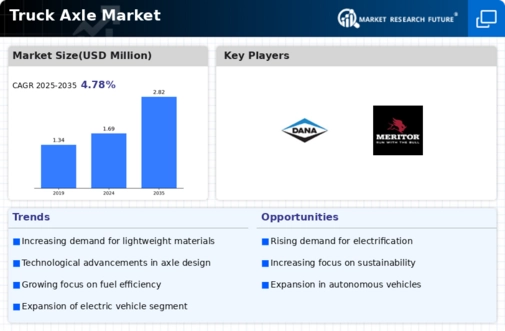

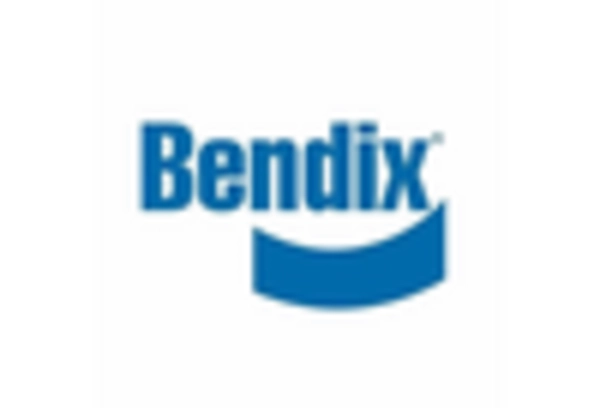
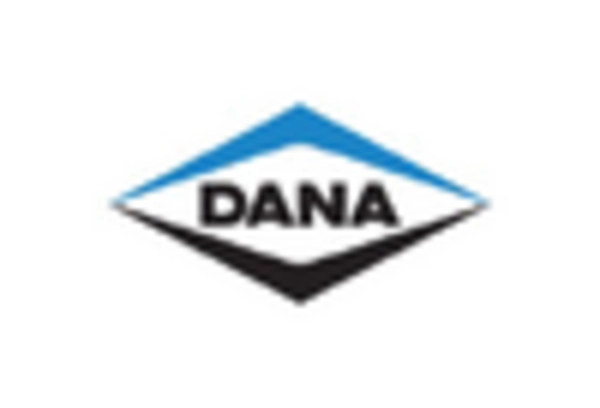
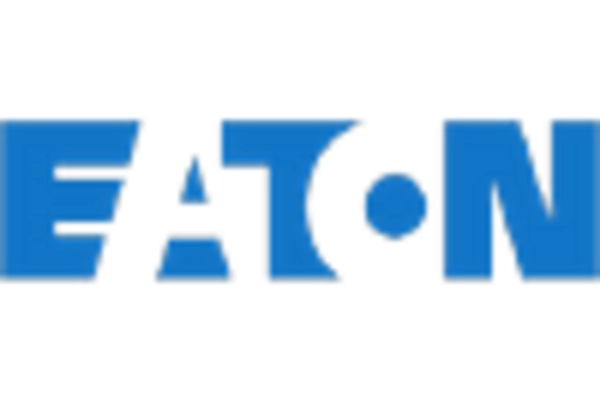


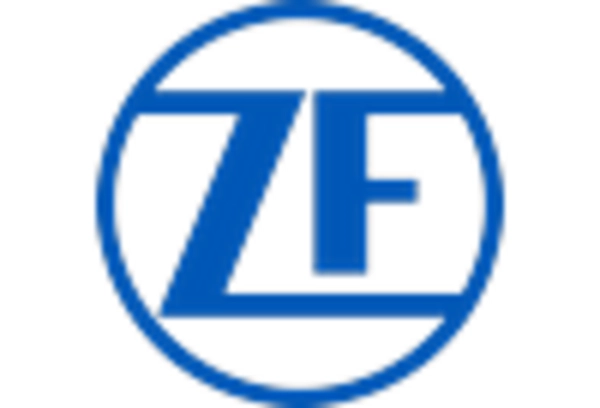

Leave a Comment